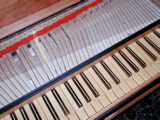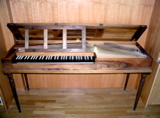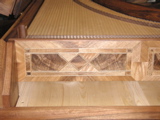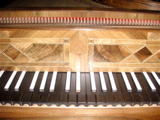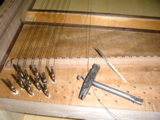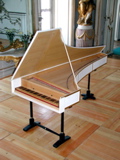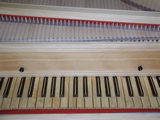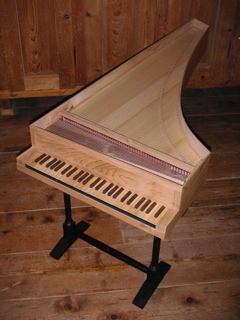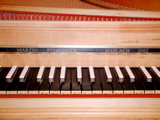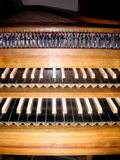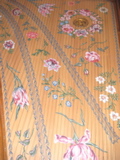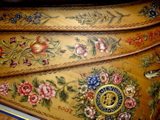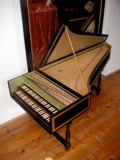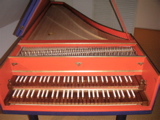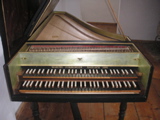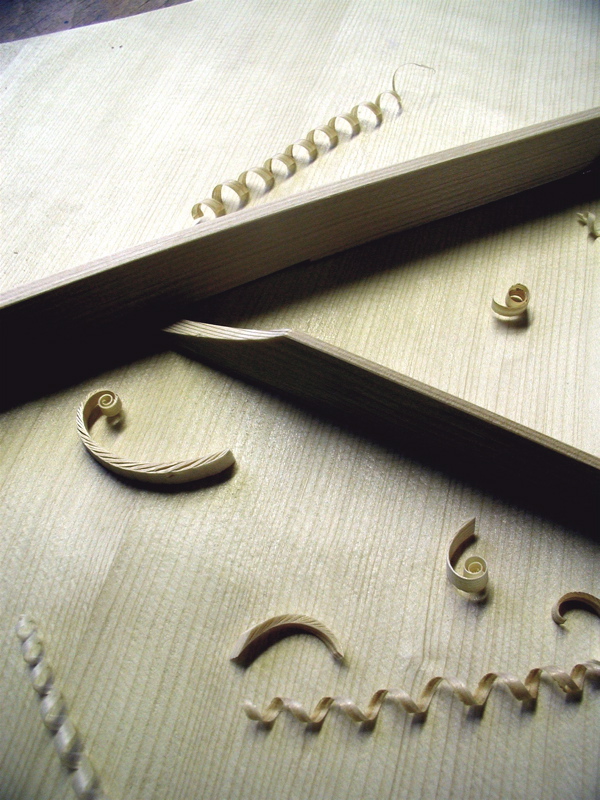
My instruments
are never exact copies. They are either inspired by a particular historical
instrument which has in most cases been personally examined, or they are
built in the style of a certain instrument-making school and period.
Each of my instruments is individually handcrafted to order. They are
built on strictly historical lines using appropriate methods and materials
which would have been used by the old masters.
From the Gothic onward the "Orgel- und Instrumentmacher" made organs, as well as clavichords and harpsichords. When they subsequently turned to piano building around 1800, the harpsichord very quickly became obsolete. So we have no continuous tradition as is in organ building or string instrument making. Therefore it is essential to study early instruments and learn from them. They are the "masters" for the present day harpsichord maker. It cannot be overemphasized how important it is to understand what the old masters did and why.
Josef Mertin, the Viennese musicologist and instrument maker, teacher of numerous musicians including Gustav Leonhardt and Nikolaus Harnoncourt, used to encourage his students to examine old instruments and try to understand why they were made the way they are. "Don't copy them, understand them!" ("...alte Instrumente kapieren, nicht kopieren!").
The
sound I am aiming at is not the sound ancient musical instruments make
today, but the sound these instruments made when new. In my opinion this
is the only true approach to the myth called authentic sound. What we
get from original instruments now is not the historical sound. It is the
sound of later centuries after long periods of neglect, damage and more
or less successful restoration. Nearly every restoration involves replacement
of missing parts through new materials. The sound may appeal to us but
it is not the sound heard by Paumann, Froberger or Bach. And their socio-economic
situation was completely different. Our ears are not the ears of the past.
Is it really possible to imagine an age when there was no electricity,
no modern medical care, no motorized traffic or communication, a time
of high mortality, endless wars and diseases?
I live in the twenty-first century and I try to build musical instruments
for players of my time. I am not trying to recreate the past but to transport
the creations of the past into our age using the tools of the ancient
masters: hand-tools, both those used in the design and manufacture of
a musical instrument and the instrument (instrumentum = tool) itself,
to make music.
Working on my own I build only a small number of instruments per year. I make most of the components myself, including keyboards, action parts, tuning pins and various other items like tangents and overspun strings for clavichords. The action consists of traditional wooden jacks with no regulating screws, the tuning pins are hand-forged with flat tops and no holes but they have a light hand-filed thread.

